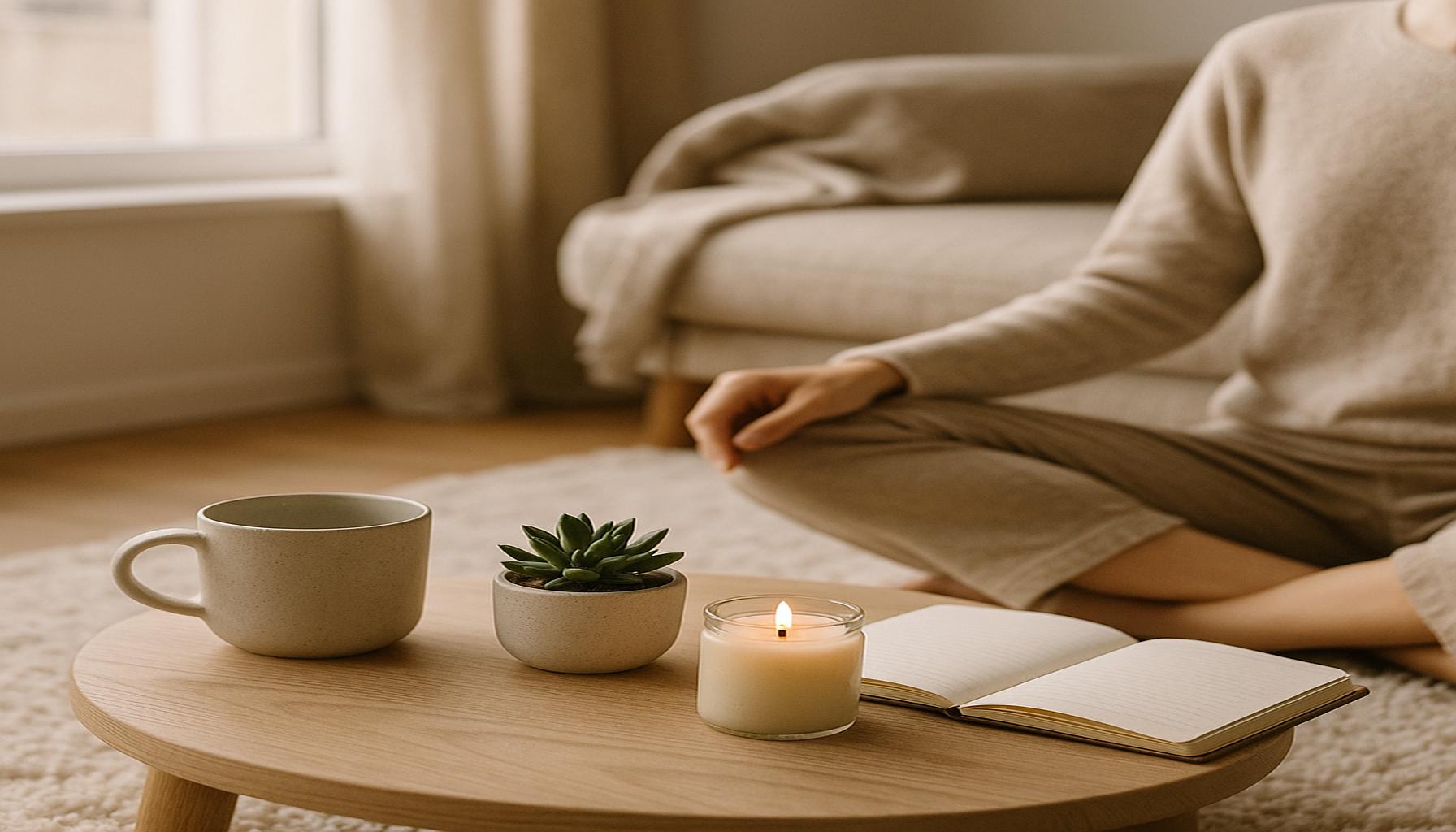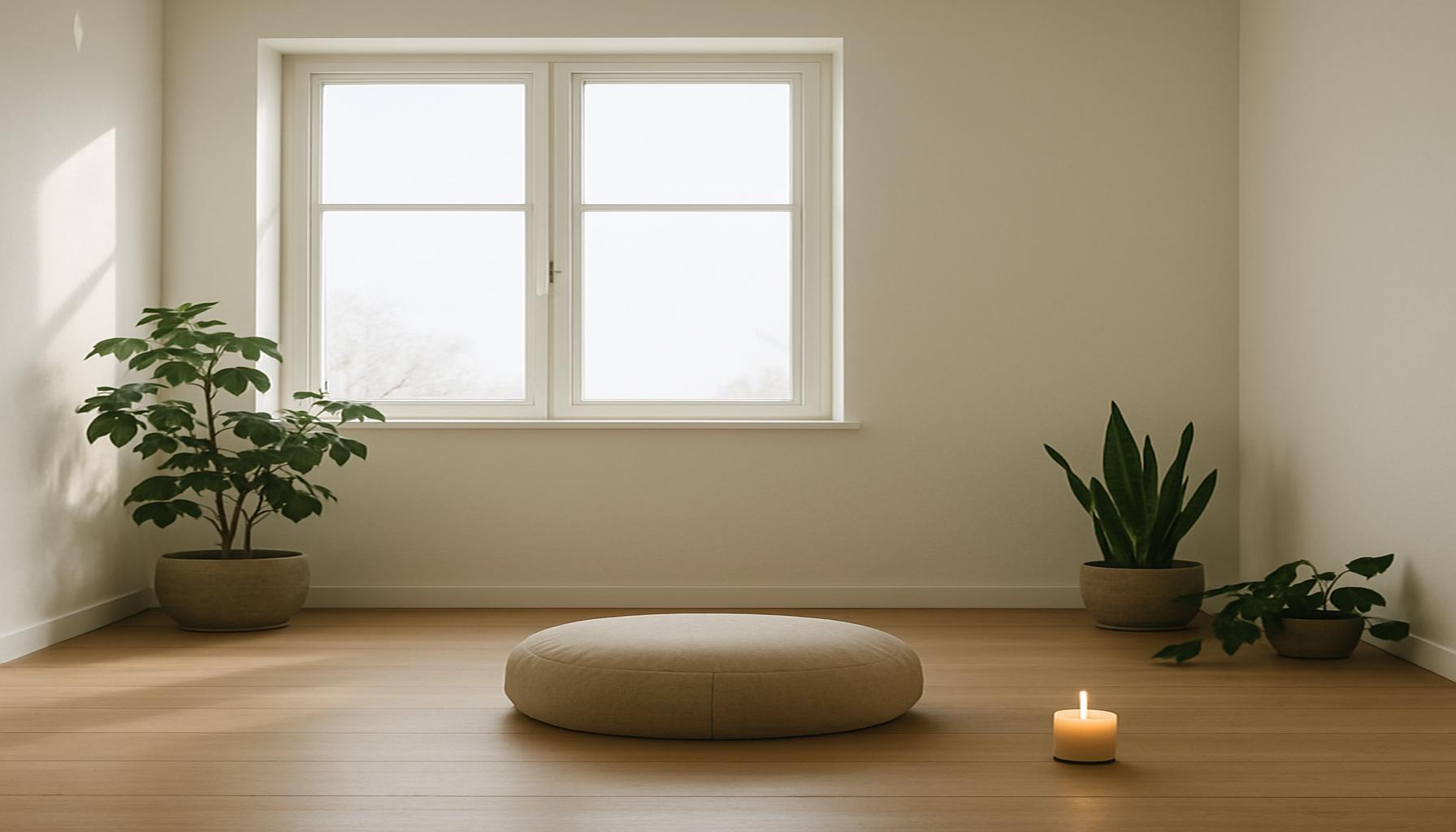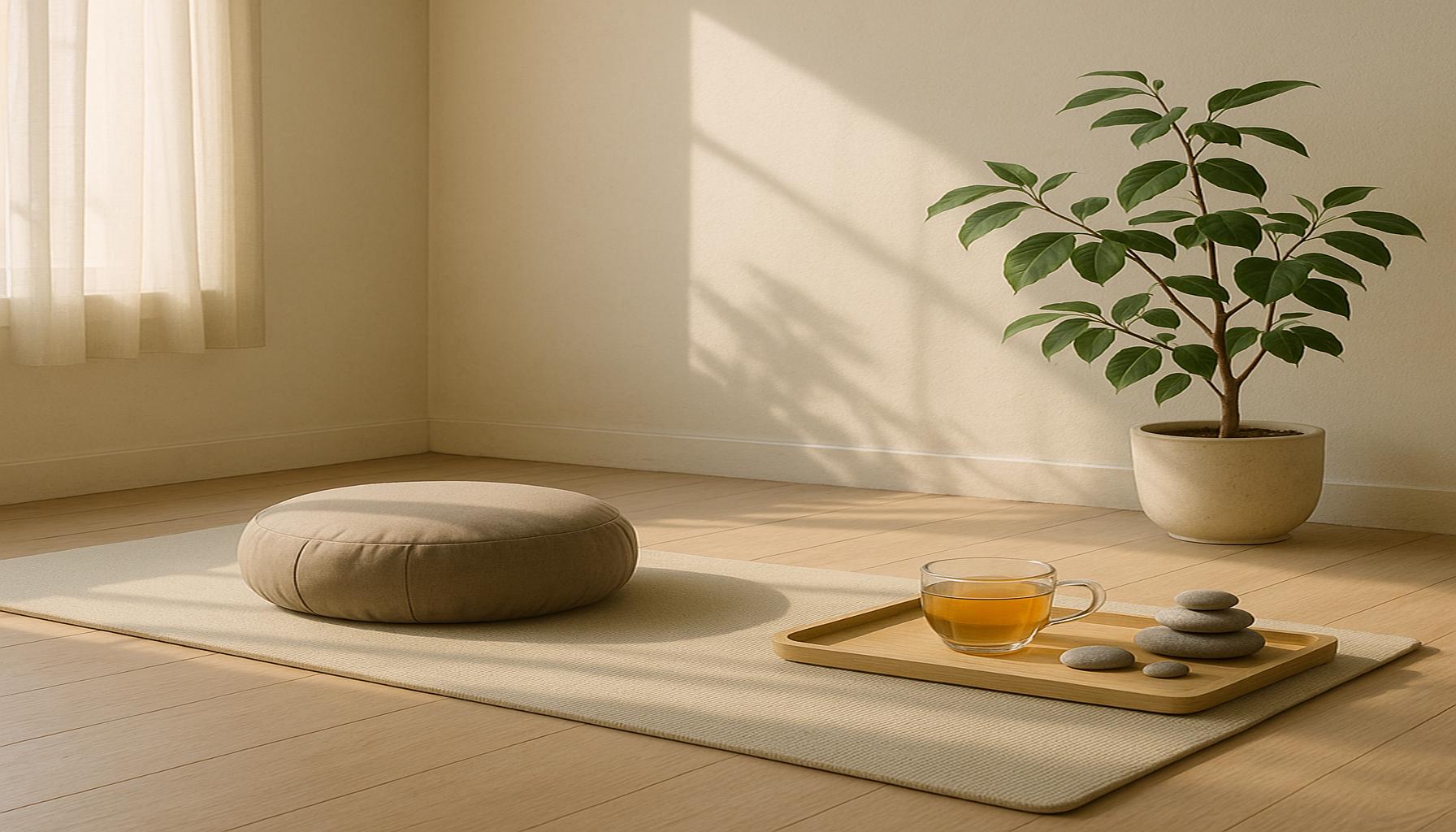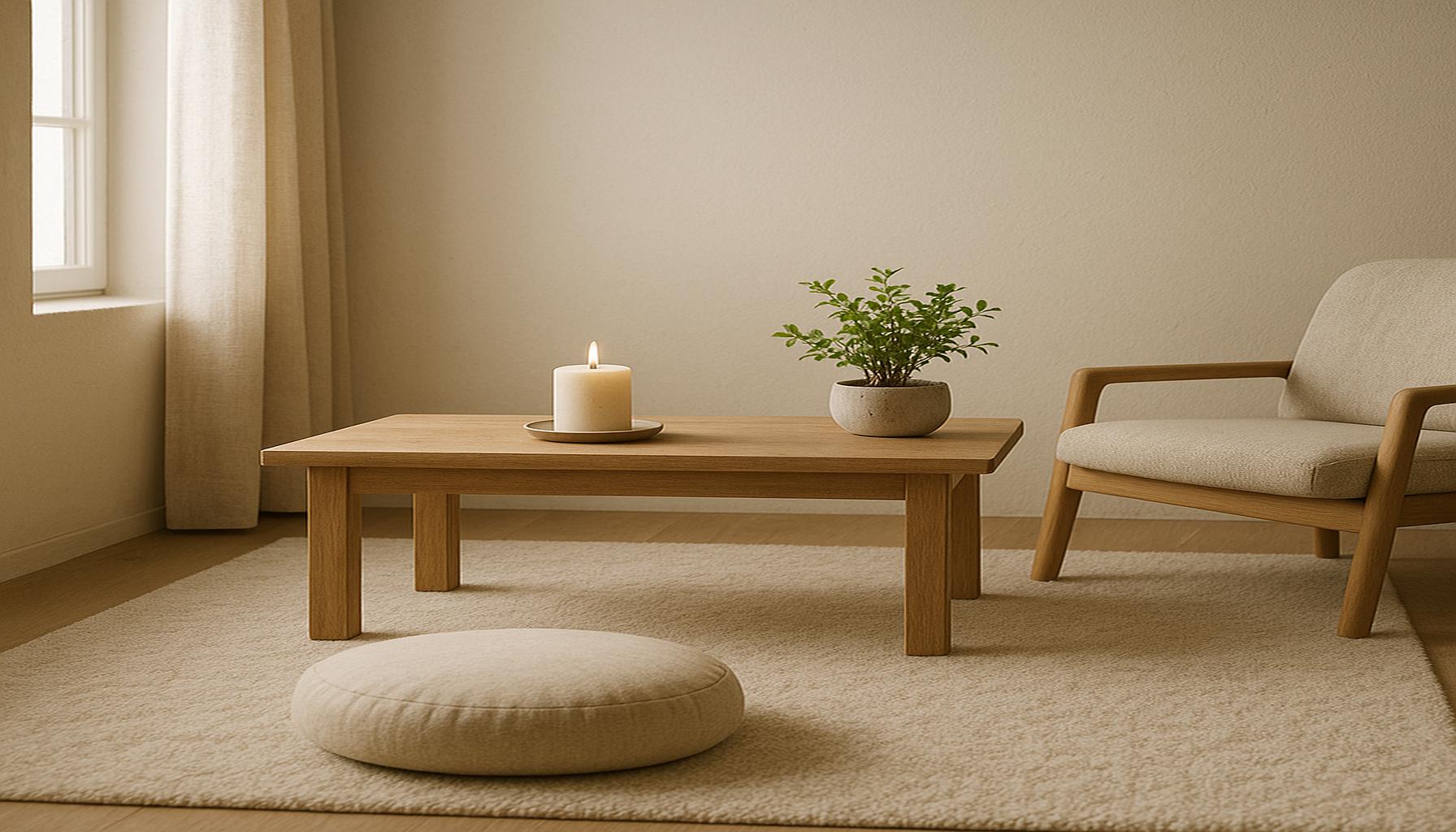The influence of mindfulness on the conscious choice of minimalist items: purpose-driven decisions

Understanding the Intersection of Mindfulness and Minimalism
In an age where consumerism reigns supreme, many individuals are taking a step back to reassess their lives and possessions. With the increasing pace of modern life, the art of mindfulness has emerged as a beacon of hope, guiding people towards more intentional choices in how they live and what they own. Mindfulness, at its core, is the practice of being present and fully engaged in the moment, which enables individuals to reflect deeply on their priorities and values. This reflective process often leads to a minimalist lifestyle, where possessions are not merely acquired but chosen with care.
The trend of minimalism is taking root across the United States, as more people discover that less can indeed be more. By concentrating on the essentials, individuals can appreciate their possessions more fully. Let’s explore the key aspects of mindfulness that heavily influence minimalist choices:
- Intentionality: Mindfulness empowers individuals to distinguish between needs and wants. For instance, before making a purchase, a mindful consumer might ask themselves whether the item will add genuine value to their life or simply serve as an impulse buy.
- Sustainability: As environmental awareness grows, many mindful consumers prioritize eco-friendly and ethically sourced items. For example, purchasing products made from sustainable materials or supporting local artisans not only enhances personal living spaces but also contributes positively to the planet.
- Emotional Connection: Mindfulness encourages individuals to cherish items that elicit positive feelings and memories. For instance, rather than cluttering a home with objects bought on a whim, one might choose to keep a few treasured photographs or heirlooms that tell a story and promote a sense of belonging.
As this trend fills living spaces across the nation, it simultaneously simplifies daily life and nurtures emotional well-being. A mindful approach to consumption fosters greater satisfaction as individuals curate their environments with items that resonate with their true selves and values. This curation transforms living spaces into sanctuaries of intention rather than chaotic collections of unnecessary goods.
By examining how mindfulness reshapes our interactions with the material world, we unveil deeper insights into the minimalist lifestyle and its long-term benefits. Embracing this philosophy not only allows for physical decluttering but also lays the foundation for a more fulfilling and enriched existence. As more individuals embark on this journey, the collective movement towards a mindful minimalist approach continues to gain momentum, inviting all of us to reconsider what truly matters in our lives.
DIVE DEEPER: Click here to discover effective decluttering strategies

Mindfulness and the Art of Purpose-Driven Decisions
Mindfulness transforms the way individuals approach not only their daily lives but also the material world around them. By fostering a state of awareness, individuals learn to engage in purpose-driven decisions that significantly influence their consumption patterns. This is particularly evident in the choices surrounding minimalist items. Rather than simply acquiring goods, mindful consumers approach purchases with intention, discernment, and clarity about their personal values.
The consciousness that mindfulness brings allows individuals to engage in a more thoughtful decision-making process, leading to a reduced desire for superfluous items. Several factors contribute to this shift:
- Value Assessment: By regularly evaluating their values, individuals can better determine which items are essential to their well-being. This practice is critical, as it helps prevent the acquisition of unnecessary possessions that clutter both physical spaces and mental clarity.
- Quality Over Quantity: Mindfulness encourages a focus on the quality of items rather than their quantity. For instance, instead of purchasing multiple fast-fashion pieces, a mindful person may choose to invest in a few high-quality garments that can last longer and align with their personal style.
- Living with Intention: The shift towards intentionality means that possessions are appreciated for their practical and aesthetic contributions rather than their status. A person influenced by mindfulness might decide to keep a well-crafted kitchen knife that enhances meal preparation, while opting to discard an array of gadgets that only serve to gather dust.
As mindfulness practices deepen, individuals often report a discovery of newfound freedom in their spaces. This liberation arises from letting go of societal pressures that encourage overconsumption. By embracing minimalism through the lens of mindfulness, individuals cultivate environments that reflect their true selves, leading to improved emotional well-being and satisfaction.
Moreover, the implications of purpose-driven decisions extend beyond personal satisfaction; they also resonate with broader societal values. For instance, the mindfulness trend promotes sustainable consumption practices, urging consumers to support brands that prioritize ethical practices and environmental stewardship, thereby fostering a healthier planet. This aspect of mindful minimalism aligns with the growing sentiment among many Americans who seek to make informed choices about the items they bring into their lives.
In essence, the influence of mindfulness on minimalist lifestyle choices is profound, offering a framework not only for physical decluttering but also for enriching one’s emotional and mental landscape. Individuals who adopt this approach experience a deeper connection to the items they choose to keep, transforming their surroundings into sanctuaries that nourish their well-being. Exploring this intersection of mindfulness and minimalism opens a pathway to living with greater purpose and intention, encouraging all to consider what genuinely matters in their lives.
The Role of Mindfulness in Minimalist Choices
Mindfulness, at its core, is about being present and making intentional decisions. When applied to the selection of minimalist items, it encourages individuals to evaluate their possessions and purchases with greater scrutiny. This approach significantly shifts the way we interact with material goods and can promote a culture of sustainability and thoughtful consumption.
Heightened Awareness of Needs
Practicing mindfulness allows individuals to distinguish between wants and needs. This discernment leads to purpose-driven decisions where each purchase reflects not just a desire for aesthetic appeal, but a deeper connection to values, such as functionality and sustainability. For example, opting for a high-quality, long-lasting product instead of multiple cheaper alternatives exemplifies this mindful choice.
Emotional Benefits of Minimalism
Choosing minimalist items often aligns with emotional well-being. Mindfulness practices can reduce stress and anxiety by fostering a sense of peace and simplicity in one’s environment, contributing to a calmer, more focused mind. When individuals surround themselves with minimalist, purpose-driven items, they often find a greater appreciation for what they own, which can enhance satisfaction and emotional resilience.
Environmental Impact
Moreover, the influence of mindfulness extends to ecological concerns. Mindful consumers tend to support brands that prioritize sustainability, leading to a collective shift towards eco-friendliness and conscious living. This not only benefits personal lifestyles but also promotes a more sustainable planet overall. Purchasing fewer items with an emphasis on environmental impact encourages companies to adopt greener practices.
Encouraging Mindful Consumption
Incorporating mindfulness into daily life can cultivate a community that values minimalism and intentionality in consumerism. Workshops, discussion groups, and online forums are increasingly focusing on these themes, enabling individuals to share experiences and strategies. As more people embrace this lifestyle, the potential for profound societal changes in consumption patterns becomes possible.
| Category | Advantages |
|---|---|
| Mindful Decision Making | Encourages thoughtful purchases that align with personal values. |
| Enhanced Well-being | Reduces stress through simplified living, fostering a more peaceful lifestyle. |
| Sustainability | Supports environmentally conscious brands, promoting greener practices. |
DISCOVER MORE: Click here to delve into mindfulness and minimalist living
Navigating the Mindful Marketplace
The growing popularity of mindfulness and minimalism converges in shaping not only individual preferences but also market trends. As consumers become increasingly aware of their buying habits, brands are adapting to meet the demand for purpose-driven products. This shift is reflected in the rise of sustainable brands, which prioritize ethical manufacturing, transparent sourcing, and minimal environmental impact.
Consumers, particularly in the United States, are responding to this cultural wave by actively supporting businesses that align with their values. Research indicates that a significant percentage of American consumers are willing to pay more for products that are sustainably sourced or produced. According to a 2021 survey by Nielsen, nearly 73% of millennials are inclined to choose brands that make a positive impact on the environment. This finding underscores the powerful connection between mindfulness, minimalism, and conscious consumerism.
Furthermore, mindfulness extends beyond the mere act of consumer choice; it invites individuals to engage in a broader reflection on their lifestyles. For instance, the decision to purchase a minimalist item such as a versatile piece of furniture often involves a consideration of its utility, aesthetic appeal, and longevity. Customers are more likely to favor items that not only fulfill a functional role but also complement their clean, uncluttered living spaces. This leads to an emphasis on multifunctional designs—think of furniture that doubles as storage or clothing that can be worn in multiple ways—demonstrating the practical application of mindfulness in decision-making.
Moreover, the integration of mindfulness into shopping experiences has given birth to a new paradigm within retail environments. Many stores now incorporate sensory experiences that promote mindfulness, such as calming music, natural lighting, and minimalistic aesthetic displays that reflect simplicity and peace. This aligns with modern consumers’ desire for more enriching and less frenetic shopping experiences. Such environments encourage shoppers to reflect on their values and make intentional choices, fostering a deeper connection between consumers and their purchases.
The role of mindfulness in influencing consumer choice also extends into the realm of technology. Modern digital platforms are harnessing artificial intelligence to deliver personalized shopping experiences that prioritize quality and sustainability. Smart recommendations can guide users toward minimalist options that match their preferences without overwhelming them with too many choices. For instance, subscription boxes focusing on sustainable products deliver curated selections that encourage consumers to embrace minimalism in their consumption habits, reinforcing the practice of mindful purchasing.
The mindful approach to minimalist items doesn’t just stop at the point of purchase; it includes a commitment to caring for and nurturing those possessions. Mindful individuals often adopt a practice of regular reflection and reassessment, continuously evaluating the role that an item plays in their lives. This ongoing process reinforces the idea that each item should serve a purpose or spark joy—a concept popularized by tidying expert Marie Kondo. By treating possessions with care and intention, consumers foster a deeper appreciation for their belongings, which reinforces the connection between mindfulness and an intentional lifestyle.
The emergence of these consumer behaviors highlights how mindfulness transforms purchasing into a thoughtful process, characterized by deliberate intentions rather than impulse. The confluence of mindfulness and minimalism encourages consumers in the United States to navigate a marketplace that is increasingly responding to their desires for sustainability, quality, and purpose—thus, illuminating the path toward a more mindful and meaningful existence.
EXPLORE MORE: Click here to dive deeper
Reflecting on Mindful Minimalism
In conclusion, the intertwining of mindfulness and minimalism has birthed a transformative approach to consumerism, encouraging individuals to make purpose-driven decisions that resonate with their values. As shoppers in the United States increasingly gravitate toward sustainable and ethically produced goods, they not only express their preferences but also contribute to a burgeoning market that prioritizes intentionality and mindfulness. The conscious choice of minimalist items reflects a commitment to quality over quantity, encouraging an appreciation for the utility and beauty inherent in each purchase.
This trend goes beyond simple market dynamics; it influences how people interact with their belongings and the environments they create. By fostering a mindful relationship with possessions, individuals are prompted to continually reflect on their choices, leading to deeper satisfaction and reduced clutter in their spaces. The ongoing evaluation of what truly adds value to their lives creates a nurturing cycle of appreciation and purpose.
Ultimately, as awareness of our consumption patterns grows, so too does the desire for meaningful experiences over material excess. This cultural shift encourages a community of consumers who are not only equipped with the knowledge of how their choices impact the globe but are also empowered to make decisions that enhance their quality of life. By choosing wisely and supporting sustainable practices, they pave the way towards a more mindful future. The convergence of mindfulness and minimalism thus offers not just a new shopping strategy, but a profound opportunity for personal growth and environmental stewardship.


